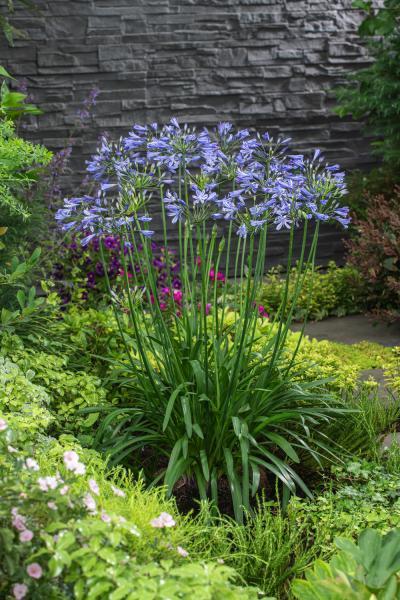How to Plant and Maintain Agapanthus in Your Yard
How to Plant and Maintain Agapanthus in Your Yard
Blog Article
Unlocking the Mysteries of Agapanthus: A Thorough Expedition of Ranges, Growing Techniques, and Maintenance Practices

Agapanthus, typically shrouded in enigma as a result of its varied range of ranges and detailed maintenance demands, occurs as an enigmatic topic for lots of yard fanatics. With a wide range of cultivars readily available, each boasting special characteristics and growth routines, understanding the ins and outs of these plants can be both challenging and gratifying. As we explore the subtleties of growing strategies and dive into the crucial maintenance practices needed to nurture these stunning blooms, a globe of opportunities unravels for those looking for to master the art of cultivating agapanthus.
Agapanthus Varieties Demystified
Agapanthus varieties display a varied range of features, making it essential for gardeners to understand the differences between them for successful cultivation. The Agapanthus praecox, or Blue Lily of the Nile, is an additional popular alternative, boasting large round collections of white or blue flowers atop tall stalks.
For those looking for a more compact option, the Agapanthus 'Peter Frying Pan' is a suitable selection, with its smaller sized stature and fragile blue flowers. On the other hand, the Agapanthus 'Tornado Cloud' selection offers a dramatic flair with its deep purple blossoms and dark vegetation (Agapanthus). Additionally, the Agapanthus 'Albus' attracts attention for its pure white blooms, producing a stunning comparison in any type of garden setup
Comprehending these distinctions can assist garden enthusiasts choose the most appropriate Agapanthus range for their specific needs and choices, ensuring a prospering and vibrant yard screen.
Growing Agapanthus Like a Pro
When growing Agapanthus for optimal growth and visual effect, precise attention to dirt top quality and sunshine direct exposure is vital. Agapanthus grows in well-draining dirt with a somewhat acidic to neutral pH level. Before growing, modify compacted or hefty dirt with natural matter such as garden compost to boost water drainage and fertility. Pick a growing place that obtains full sunlight to partial shade, as Agapanthus typically favors at the very least 6 hours of sunlight daily for robust flowering. When growing, guarantee the crown of the plant sits at dirt degree to avoid rot and encourage healthy development.

Important Maintenance Tips for Agapanthus
To make sure the ongoing health and wellness and vitality of your Agapanthus plants, what key upkeep techniques should be prioritized throughout the expanding season? Agapanthus plants prefer equally damp soil yet can tolerate short durations of drought once established. Agapanthus plants profit from department every few years to protect against overcrowding, enhance flowering, and renew the plant.
Troubleshooting Common Agapanthus Issues
Identifying and promptly attending to common problems that might influence the health of your Agapanthus plants is vital for keeping their vitality and elegance. One common issue that Agapanthus might encounter is overwatering, leading to root rot. To avoid this, make certain correct water drainage in the soil and avoid waterlogging. On the other hand, underwatering can create yellowing and wilting of fallen leaves. To battle this, establish a regular watering routine, making sure the dirt is wet yet not saturated. Agapanthus are additionally susceptible to pests such as aphids and snails. Frequently check the plants for any kind of signs of invasion and treat them quickly read review with proper check here techniques such as insecticidal soap or natural predators. Additionally, inadequate sunlight can result in stunted development and less flowers. Ensure your Agapanthus receive enough sunshine, preferably around 6-8 hours per day. By being attentive and resolving these typical issues promptly, you can help your Agapanthus grow and prosper in your yard.
Optimizing Agapanthus Blooms: Professional Strategies
Enhancing the vibrancy and wealth of Agapanthus flowers calls for a calculated technique that harnesses optimal expanding conditions and specialist methods. To make the most of Agapanthus blooms, begin with selecting the ideal variety for your area and desired aesthetic. Agapanthus selections vary in height, flower shade, and blossom time, so choose one that matches your garden's demands.
Plant Agapanthus in well-draining soil with sufficient sunshine exposure. Routine watering, specifically throughout the active expanding period, is vital to prevent anxiety and encourage flowering.
Feed Agapanthus with a well balanced plant food to advertise blooming. Deadheading spent blooms can redirect the plant's power right into creating brand-new blossoms (Agapanthus). Separate overcrowded clumps every couple of years to rejuvenate the plant and boost growing
Last but not least, safeguard Agapanthus from insects and illness that can prevent blooming. Implementing these professional methods will aid you accomplish a magnificent display of Agapanthus flowers in your yard.
Verdict
In verdict, the secrets of agapanthus have been unveiled with a thorough exploration of ranges, planting techniques, and maintenance techniques. By troubleshooting common concerns and applying professional strategies, one can make the most of agapanthus blossoms and produce a stunning yard screen.

When growing Agapanthus for optimum growth and aesthetic impact, careful attention to soil top quality and sunlight direct exposure is critical.To grow Agapanthus like a pro, room the plants according to their fully grown size to permit for proper air flow and look at these guys protect against overcrowding. Agapanthus plants profit from division every few years to avoid congestion, improve flowering, and revitalize the plant.In conclusion, the mysteries of agapanthus have been introduced through a thorough exploration of selections, growing techniques, and maintenance techniques.
Report this page